Want to know what’s intimidating?
Trying to write the Internet’s best article on a given subject — an article that is way better than anything online.
That’s not just intimidating. It sounds pretentious, right?
Is it not the height of arrogance to assume that you can unleash an article that makes the industry’s best writers, leaders, and savants gape in astonishment at your brilliance and insight?
Perhaps.
But don’t we all want to write something like that? Wouldn’t it be great to create a zinger of an article and land at the top of the search engines?
Most of us want to create content that succeeds in spite of heavy competition. What seems to be lacking is a solid and proven methodology for doing so.
What you’re about to read is a step-by-step guide that teaches you exactly how to do it.
This process worked for me. While consulting with one of digital marketing’s authorities, I was able to generate millions of unique monthly pageviews (search traffic galore) on blog articles as a result of using this process.
I was producing articles in a content-saturated market with a bajillion articles on every conceivable topic. Yet when we refined and executed the method explained below, our articles started hitting the top of the search results in a matter of months.
We went from zero to domination in just under one year.
Let me be clear. What worked for me in one industry may not work for you in your industry. Results vary. I want you to know this information, because it could work. And for me, it did work.
With those caveat lectors in place, this article presents a process-driven method for writing an article or blog post that is better than anything that’s been written on the subject.
1. Gather your resources.
When I refer to an “article,” you may substitute the term “blog post.” The deliverable is simple: written content for your website or blog that is superior to anything else.
But before you open up a Google document and start writing the world’s greatest blog post, you’ll need to gather your resources.
You should have clear answers to the following three questions:
- What specific subject are you writing about?
- What keyword are you trying to rank for?
- What is the “best” article currently available on this subject?
I’ll walk through each of those points in detail.
What specific subject are you writing about?
The more detailed, the better. You will not be able to create a SERP-crushing piece of awesomeness unless you know exactly what it is your content is about.
What keyword are you trying to rank for?
Please don’t dismiss this point as some needless SEO gimmick. Like it or not, your article will only get eyeballs in search by targeting a specific longtail keyword.
What is the “best” article currently available on this subject?
Best is a qualitative word and, thus, totally up for argument. However, “best” according to Google is the number one position in the search results for your given keyword.
Thankfully, we don’t need to do too much guessing to figure out what Google thinks is the “best.” To find out what the best article is, just Google your keyword and see what shows up at the top of the search results page.
Let me give you a quick example.
In one recent effort, I was creating an article for LitCharts on the topic of words that Shakespeare invented. The target keyword: words shakespeare invented.
I Googled it. Then, I picked the top article. I’m done, right?
Sorta.
But not so fast.
Although Google’s results are generally pretty good in determining search ranking (based on 200+ factors), they’re not always a reliable judge of truly well-written content. The qualitative question cannot be answered by Google alone. You may have to do a bit of value judging here.
You don’t have to settle this issue conclusively. You can select more than one “best” article. In your situation, you may want to pick the number one search result and something a little further down the page.
Now, gather some information on this article:
- What is the headline?
- How many words long is it?
- How many images does it have?
- How many sections does it have?
Most of these metrics you can get by manually counting. For word count, you can follow this quick process:
Highlight and copy the content of the article itself. (Try not to highlight sidebar, header, or footer material.)
Here’s what I did when copying the “best” piece of content on Shakespeare’s words. I highlighted the body:
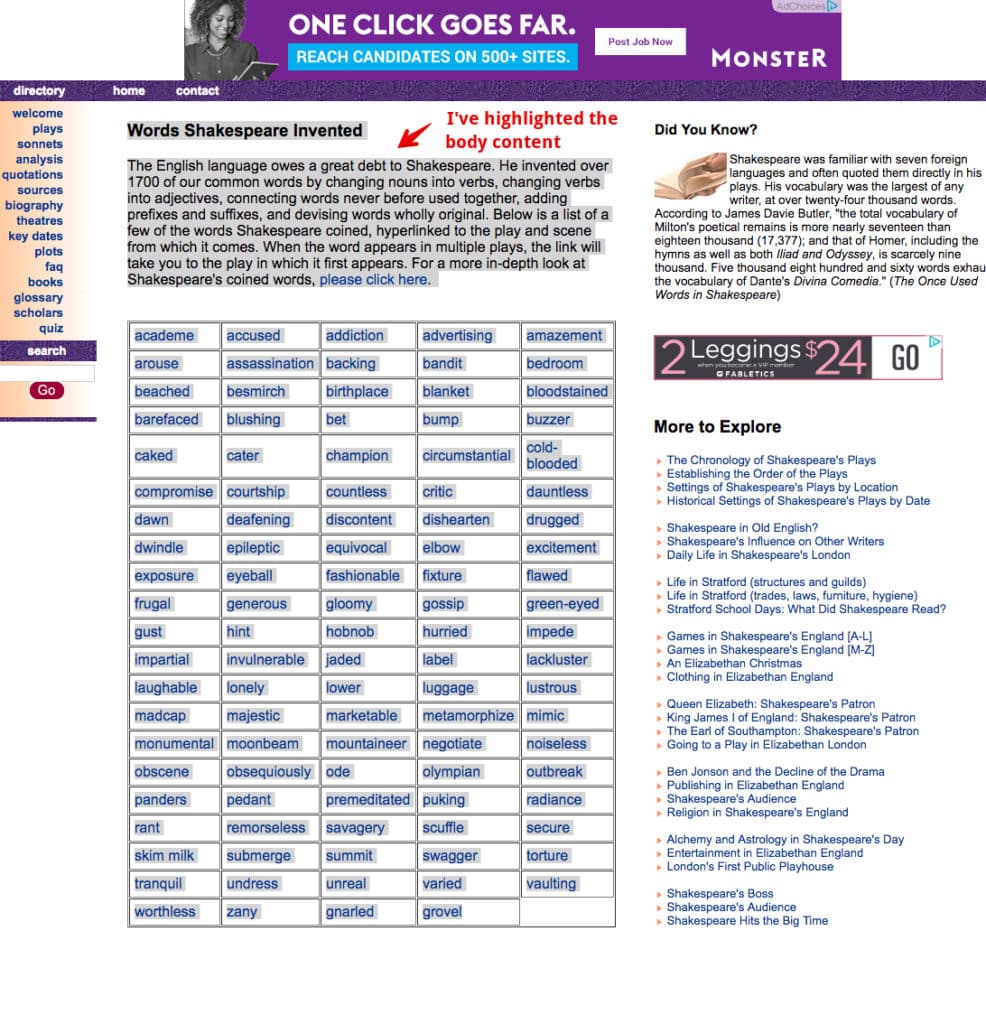 Then, I opened up WordCounter.net in another tab, and pasted the content that I just copied:
Then, I opened up WordCounter.net in another tab, and pasted the content that I just copied:
Record this number — the top number in the right sidebar — in your notes.
Now you’re ready to start creating your content.
2. Write a better headline than the “best” article.
According to a hackneyed factoid, 20% of content readers won’t read past the headline. If you have a ho-hum headline, you can expect the lackluster 20% to click through and read your content. But if you create a really good headline, you will probably gain more readers.
So, how do you create a “really good headline?” Unless your name is David Ogilvy, you may not know where to start.
This isn’t an article on headline writing. But since the headline forms such a critical component of any article, it’s worth discussing.
I’ll provide two data-backed tips for creating stellar headlines:
1. Choose the right words — superlative adjectives and emotion words.
The specific words you use in your headline matter. Humans who speak any language have a visceral connection with certain words due to the association of those words with a given emotion, memory, or sensation.
Some researchers assert that “words can change your brain” by altering gene expression, thus prompting amygdala activity and therefore hormonal output. The mental reaction time to such words is virtually instantaneous:
Just seeing the word (as opposed to actually cognitively processing it) can produce such a reaction.
What kinds of words are so poignant?
The research points to two main categories of words. The first category is emotion words. These terms trigger any one of the major emotions — anger, disgust, fear, happiness, sadness, or surprise.
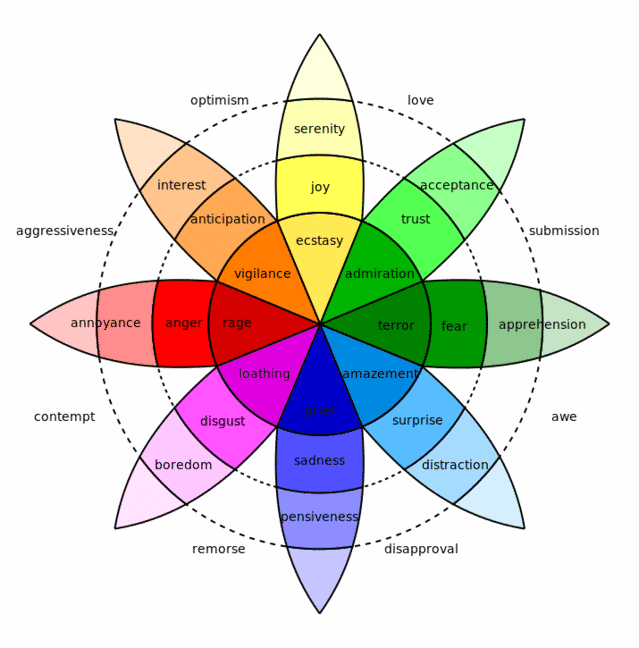 The range of emotion-triggering words is endless. A word such as bright can spark the emotion of happiness. A term like last chance can elicit feelings of fear. Describing something as delightful may introduce the emotion of surprise.
The range of emotion-triggering words is endless. A word such as bright can spark the emotion of happiness. A term like last chance can elicit feelings of fear. Describing something as delightful may introduce the emotion of surprise.
The second major category of powerful words is adjectives. While some of these words are obviously emotion words, as described above, there is particular category of adjectives and adverbs that I want to focus on: superlatives.
Superlative adjectives are words like most, best, highest, longest, biggest, shortest, smallest, etc. Superlatives tend to tap into reader’s curiosity. Kevan Lee, writing for Buffer, explains that superlatives “make promises that the reader finds intriguing.”
Negative words like never or worst are particularly compelling when it comes to superlative usage:
But what about clickbait? Doesn’t all this talk of emotionalism, sensationalism, and superlativism (wait, is that a word?) point to the creation of clickbait?
Well, what IS clickbait?
According to the OED, clickbait is “content whose main purpose is to attract attention and encourage visitors to click on a link to a particular web page.” That’s not inherently an evil thing, but you’d better have content to back it up.
And that’s exactly what this method proposes — creating content (not just a headline) that appeals to readers. The most notoriously clickbaity content on the Interwebz is of the curiosity gap variety.
Need an example?

Sometimes, such clickbaity headlines do use superlatives. Like “absolutely,” or emotional words like “terrible.”
Sometimes, clickbait headlines are downright macabre.
Headlines like these are not necessary.
Nor are they advised.
Nor are they ethical.
Headlines like this employ the dubious curiosity gap technique and often lead to content that is disingenuous or disappointing.
The entire point of this entire article is to make great content. Great content invalidates clickbait headlines. Focus on deep, solid content. Only make promises in a headline that you can keep in your content.
Use superlatives. Use emotional words. Avoid clickbait. And your headlines will work better.
2. Full sentences work.
Research from CoSchedule shows that headlines between 60-100 characters have the highest level of engagement.
The average sentence is 75-100 characters. Thus, it makes sense to use a whole sentence — around 60-100 characters — as a headline. A complete sentence has the power to convey a complete thought.
Though headline virality is trend-driven, it’s important to note that the full-sentence headline trend is particularly effective as of early 2018.
Notice how Vox has full 1-2 sentence headlines as their most-shared posts over the past 12 months.
The same trend holds true in the top-shared posts of Business Insider throughout 2017. Most of them are full sentences.
The point is this: if you need to write a full sentence as a headline, go ahead. It might actually work better.
Don’t be afraid to spend some time curating a good headline. Often, it’s better to create your headline after you’ve written the article, since this gives your brain time to ruminate on the topic.
Your goal isn’t to make your content fit your headline, but for your headline to announce what the article is all about — and why it’s worth the reader’s time to click and read.
Tactical takeaways:
- Use emotional words in your headline.
- Use negative superlatives in your headline.
- Use full sentences as the headline.
3. Make your article longer than the “best” article.
Length matters.
As an SEO researcher, I’ve participated in data-driven studies that relentlessly prove a single point: longform articles get more web traffic, social shares, and backlinks.
Here are the charts from HubSpot to visually communicate the point.
The number on the Y-axis refers to the number of words in an article/page. The non-enumerated bars on the X-axis displays, comparatively, how many shares, how much traffic, and how many linking domains articles of that length received. Longer orange bars are better.
Articles exceeding 2,000 words generally perform better according to the standard benchmarks of shares, traffic, and domains.
If there are three things that content marketers love, it’s social shares, traffic, and backlinks. The way to get these things is simple: go long. Longform content is better. It’s that simple.
It should go without saying that fluff isn’t acceptable. When I designed 4k-10k word articles for my clients, I would analyze and strategize the content using tools like MarketMuse to make sure that it was both deep and wide — touching all the relevant subjects and going deep in a few of those subjects.
Now that I’ve made the longer is better point, I want to back off the pedal just a bit. You may not have scads of time at your disposal to write War & Peace. An uberlong article could take days to write.
Maybe you don’t have days to write. Maybe you just have a few hours on a weekend to scramble out that week’s blog article.
And that’s okay.
If you can only write a 300-word post, you’re not wasting your time. You are still creating value. On the MeetEdgar blog you may have heard the string analogy: “A good blog post is like a good piece of string – it’s exactly as long as it needs to be.”
Take, for example, Seth Godin, veritable demigod of marketing. As MeetEdgar has explained in the past, Godin isn’t exactly publishing thousands of words in each blog article, is he now?
Shorties can work.
Tactical takeaway:
How long is long enough? 2,500 words is a safe general number, but the specific length depends on the “best” article that you’re trying to take down.
4. Provide more research in your article than the “best” article.
Although eyes tend to glaze and minds tend to numb in the face of data and research, I still recommend using it in your article.
It’s okay if the average reader skims over your summary of that peer-reviewed, randomized, double-blind, placebo-controlled study article you just cited. Why? Because you communicated authority simply by doing your research and citing that journal.
When I created my article on Shakespeare’s word inventions, I tried to muster a modicum of authority by citing authoritative publications, linking to the OED, and having a couple Harvard literature grads edit the article.
It all paid off. The article began to gain respect from universities in three different countries, including a backlink from Yale.
People recognize thorough research and hard work. More to the point, most people respect it.
Tactical takeaways:
- Discuss salient research that proves the claims of your article.
- Link out to authoritative websites or journals that substantiate your claims.
5. Go deeper than the “best” article.
My advice is to write a deep article – deeper than the best article out there on the subject.
But what does deep mean?
First, I can tell you what it doesn’t mean:
- Deep is not the same as opaque or unclear.
- Deep writing can be just as lucid as a third-grade storybook.
- Deep is not saying everything that could be said about a given subject.
What is deep, then?
A piece of deep content answers readers’ major questions about a subject.
Say you’re writing about hamster pellets.
Random, I know.
Your readers probably have questions:
What kind of pellets? What do they have in them? Why not seeds? What about carrots? What about hamster gut health? What should the hamster’s droppings look like? What is a “natural” hamster diet? Are hamster pellets vegan? Where do you buy hamster pellets? What are the best hamster pellets? What do they have in them? Can you share data from any longitudinal studies on hamsters eating pellets vs. seed?
You get the idea. I’m no hamster expert, but if I were researching the optimal diet for hamsters, I would want information that answered my major questions.
“Depth not breadth” was sort of a slogan a few years back as leading content marketers realized with a pang of shock and horror that broad content was ineffective and inconsequential in reaching their target audience.
The CEO of Medium, Ev Williams, made this point with a few expletives and a well-aimed discussion titled, “A mile wide, an inch deep.”
Williams, a champion of longform over against microblogging, made a great point:
“Most Internet companies would build better things and create more value if they paid more attention to depth than breadth.”
Contently, sitting in the amen corner, published an article called “Why ‘Depth Not Breadth’ Is the Rallying Cry of Content Marketing.”
It’s not just rants that make the point. It’s research, too.
Brafton and other data-digging organizations like Content Marketing Insights have rallied numbers to the cause. Deep content is more successful at reaching and converting one’s target audience.
As long as you understand what deep means, you can create content that is successful. Deep content works better, ranks higher, spreads farther.
Basically, deep content wins.
Tactical takeaway:
Answer your readers big questions, thereby going deep with your content.
6. Provide more step-by-step guidance than the “best article.”
One of Don Draper’s most memorable lines is “people want to be told what to do so badly that they’ll listen to anyone.”
Although Draper is a fictional character, there’s truth in his quip.
Sure, a sizeable portion of your audience may be comprised of rebels or questioners — people who will take a contrarian view. Many people, however, simply want someone to tell them what to do.
If you tell your readers what to do, backed by research and a sizzling-hot headline to boot, they will listen.
There’s a reason that how-to sites are some of the most popular sites on the Internet. Lifehacker and eHow, for example, have made a business out of telling people how to do just about anything.
Many of today’s most compelling articles in niche industries are laser-focused on the how-to as well.
Consider the content marketing industry, of which I consider myself a card-carrying member. Look at the share metrics on these how-to articles!
Admittedly, not every subject matter lends itself to a how-to section. When writing about Shakespeare, for example, I didn’t see an opportunity for it. For many content articles, however, there will be plenty of opportunities to create a step-by-step section.
The clearer, the better. I suggest using numbered lists and click-by-click instructions when appropriate. Telling people is great. Showing them exactly how is even better.
Tactical takeaway:
Create a step-by-step, how-to section in your article if possible.
7. Make sure your article is better organized than the “best” article.
Which of the following is easier to read — Exhibit A or Exhibit B?
I’m going with B. (I’ll take Leo Babauta any day.)
The simple reason why your brain likes the second of the two images above has everything to do with organization.
In writing, there are two types of organization.
First, there is the cognitive organization of the concepts themselves. It helps to have an outline.
Second, there’s visual organization. Breaking up your article into headings, subheadings, bullet points, and paragraphs makes it much easier to read and understand.
It’s this visual organization that allows reader to process your information, skim your content, and understand what you’re trying to communicate.
Tactical takeaways:
- Use headings, subheadings, and bullet points.
- Use short paragraphs and sentences.
8. Make your article more personable than the “best” article.
I’ve referred to myself several times in this article.
This is more than an ego-trip. It’s my attempt at authenticity. There’s a real human being creating this stuff, not a detached third party with zero capacity for using first-person pronouns.
In this article, I have cited work that I’ve done – not to toot my horn, but to let you know, “Hey, this stuff works. I’ve tried it out.”
I’m the author — not the MeetEdgar octopus, not my eight-year-old daughter, not my alter ego. It makes logical sense to communicate directly from me to you, like in real life.
Good writing is personable. Here are some tips that can improve the personableness of your writing:
- Use first person singular pronouns naturally and regularly — I, me, my, mine. Contrary to what you may think, this does not make you a narcissistic egoist.
- Use second-person pronouns, too. I’ve referred to you in this article dozens of times. Why? Because I’m talking with you. Makes sense to just say it.
- Use everyday language. As much as possible, write like you talk. This makes your writing more felt and memorable. Plus, you can infuse much more personality and verve into a piece of content. I’m trying to write in much the same way as if I were speaking with you in the coffee shop where I’m writing this.
- Use the active voice. “It is believed,” or “one must understand” are awkward and stilted. If you must, sprinkle in a few passive voice sentences for variety. For the most part, however, try to stick with the tried and true active voice.
Tactical takeaway:
Write in the first person.
9. Use more and better images than the best article.
Finally, use images.
You can easily enhance the most boring article by throwing a few colorful photos on it.
And guess what?
It doesn’t even matter if the pictures are related to the subject matter or not.
The simple act of breaking up mentally-demanding words with brain-easy images makes the content itself more enjoyable, more pronounced, and even more memorable.

See what I did there? A little Unsplash goes a long way in helping brighten up what would otherwise be an image-free section about images.
Typically, I try to use one image per 400 words. Ideally, the image enhances what the article is communicating, such as when I show a graph or display a screenshot.
Tactical takeaway:
Sprinkle in images – ideally, relevant ones – throughout your content.
Conclusion
Let me summarize this article in eight points:
- Craft a headline that uses emotional words and maybe even negative superlatives.
- Create at least 2,500 words of solid content.
- Back up your claims with research and the links to show it.
- Answer any and all questions about your subject matter.
- Include a how-to section in your article if possible.
- Organize your article into clear sections and paragraphs.
- Write in the first person.
- Use lots of images.
If you do more and better than the “best” article, you can’t help but create an even better article.
And you don’t even have to be a stellar writer, though that obviously helps. You just take what’s been done and do it better.
I’m rooting for you, Hemingway.
Oh, and if you want to try this method on this article, I’d be thrilled!
 Daniel Threlfall is a content marketing strategist who has helped to engineer the growth of blogs such as NeilPatel.com and brands such as Fiji Water. Daniel is the co-founder of Launch Your Copy, a resource to help copywriters triple their writing speed and income.
Daniel Threlfall is a content marketing strategist who has helped to engineer the growth of blogs such as NeilPatel.com and brands such as Fiji Water. Daniel is the co-founder of Launch Your Copy, a resource to help copywriters triple their writing speed and income.


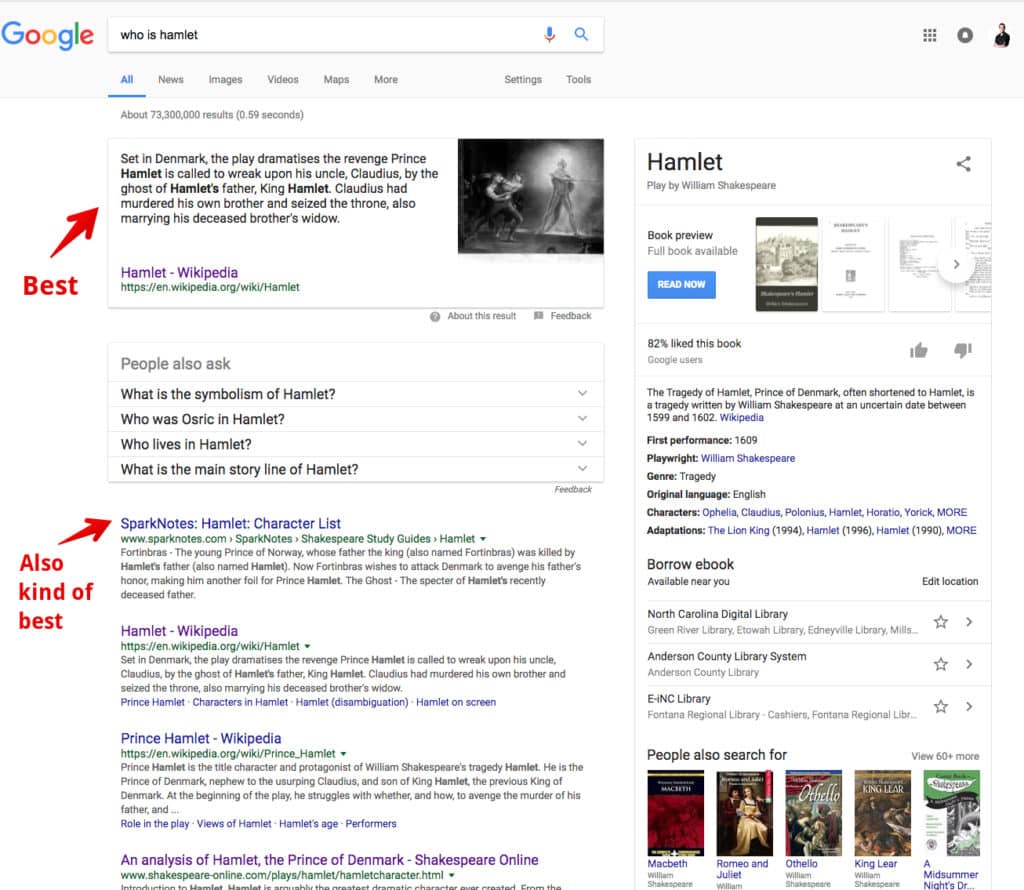
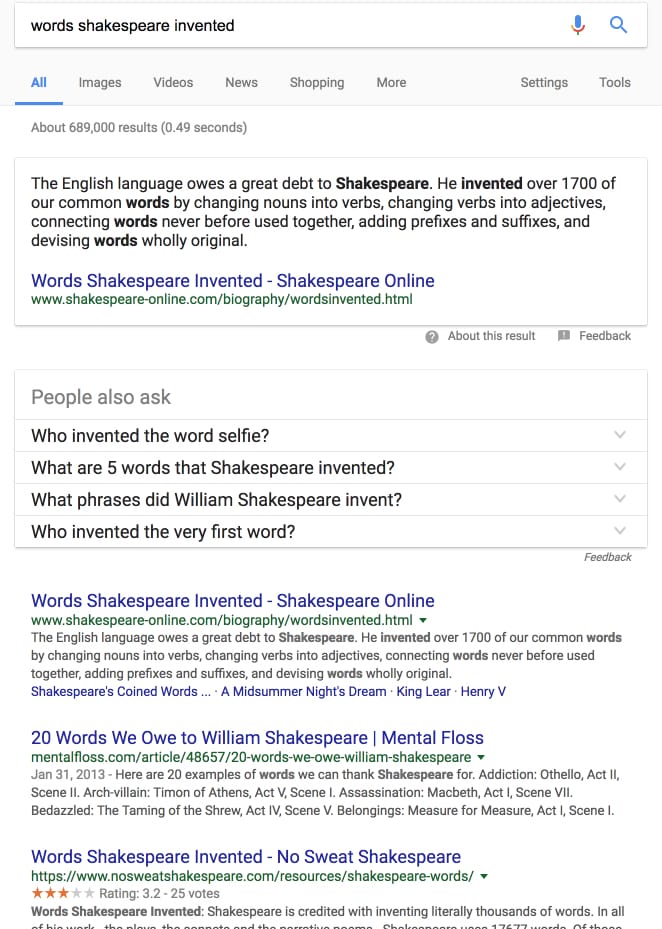
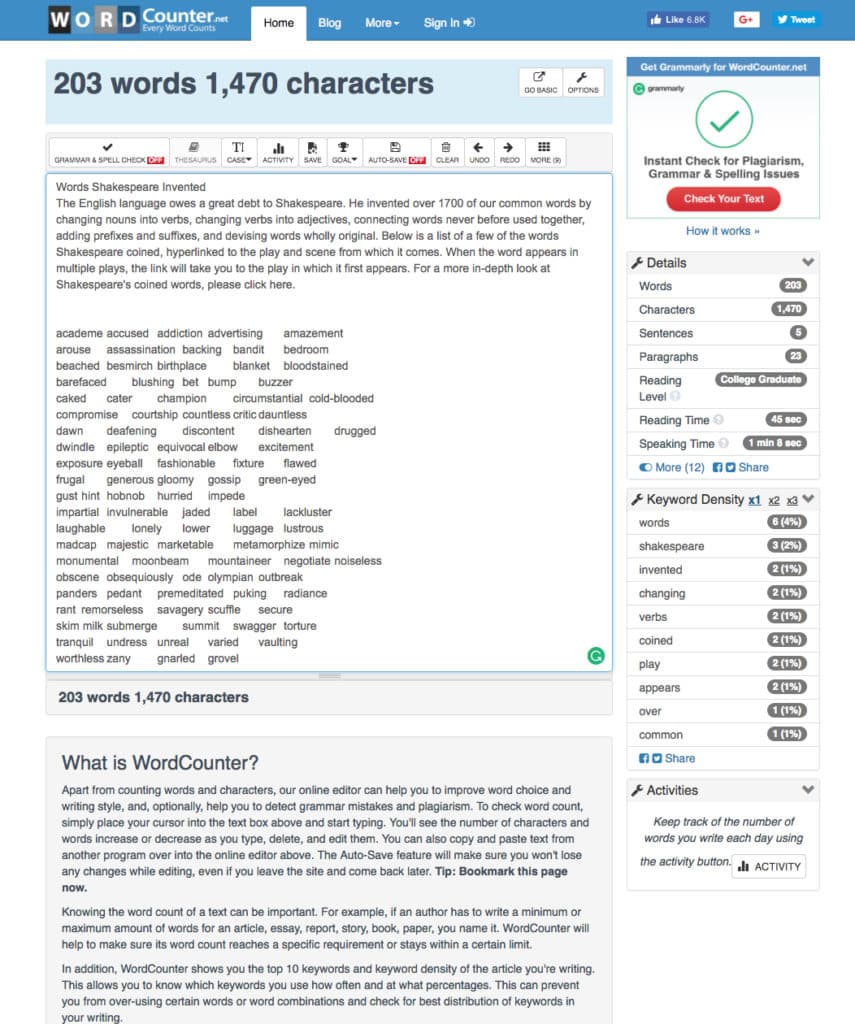

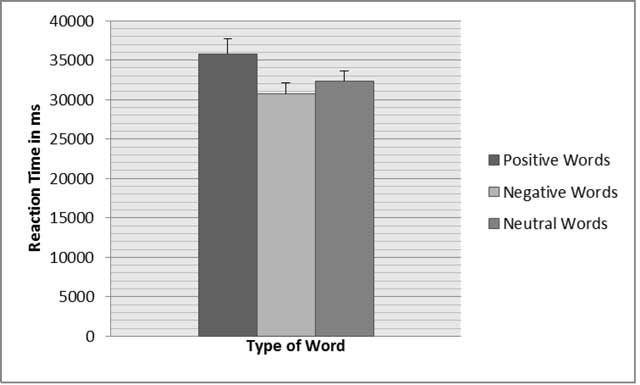
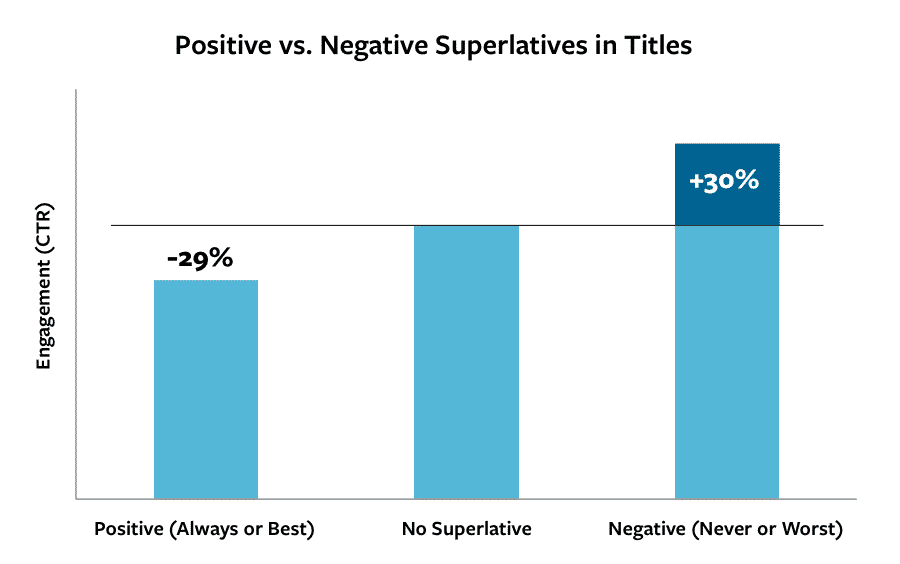
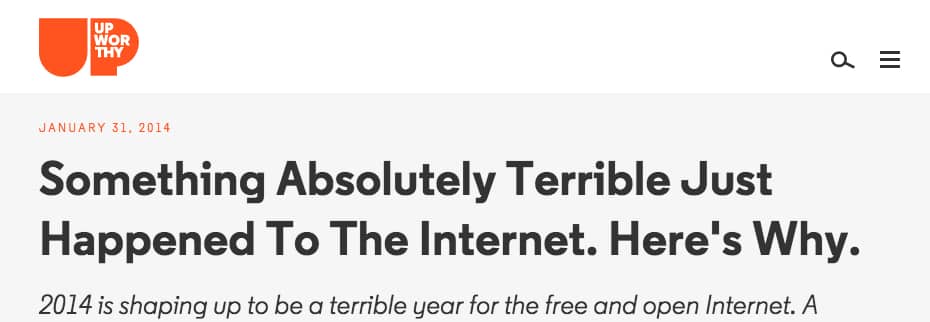
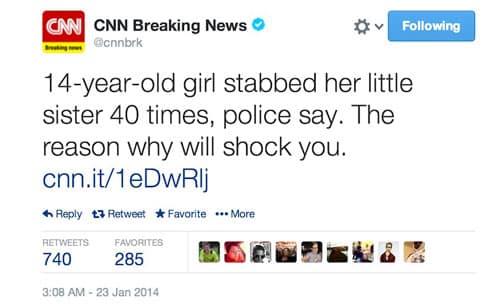
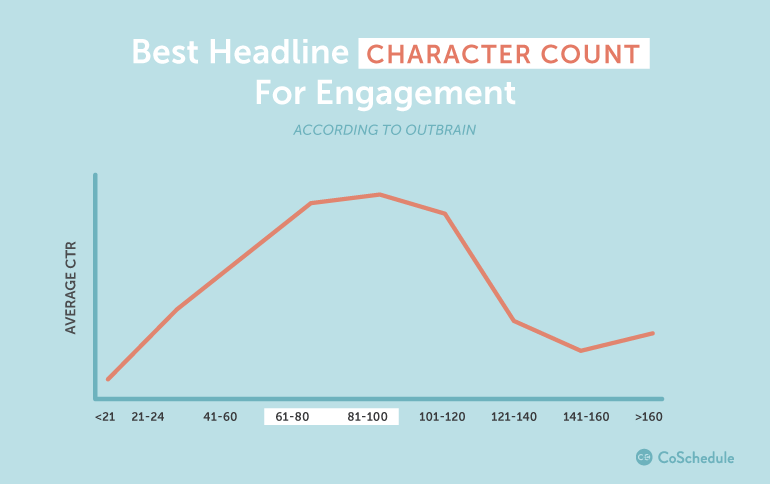
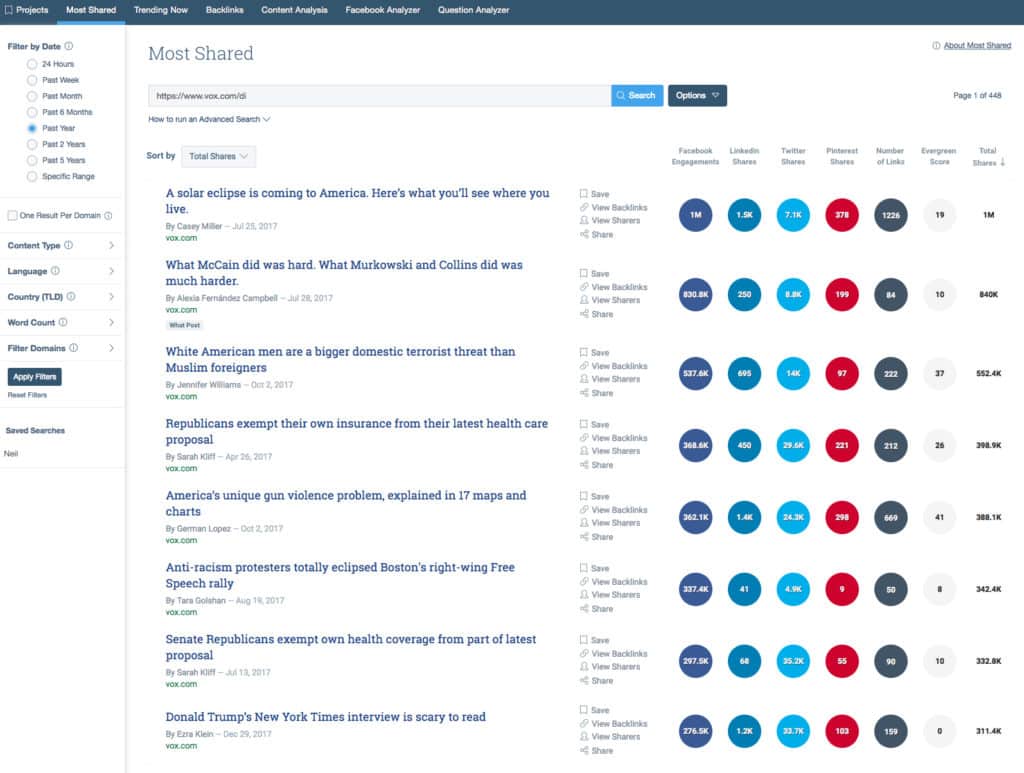
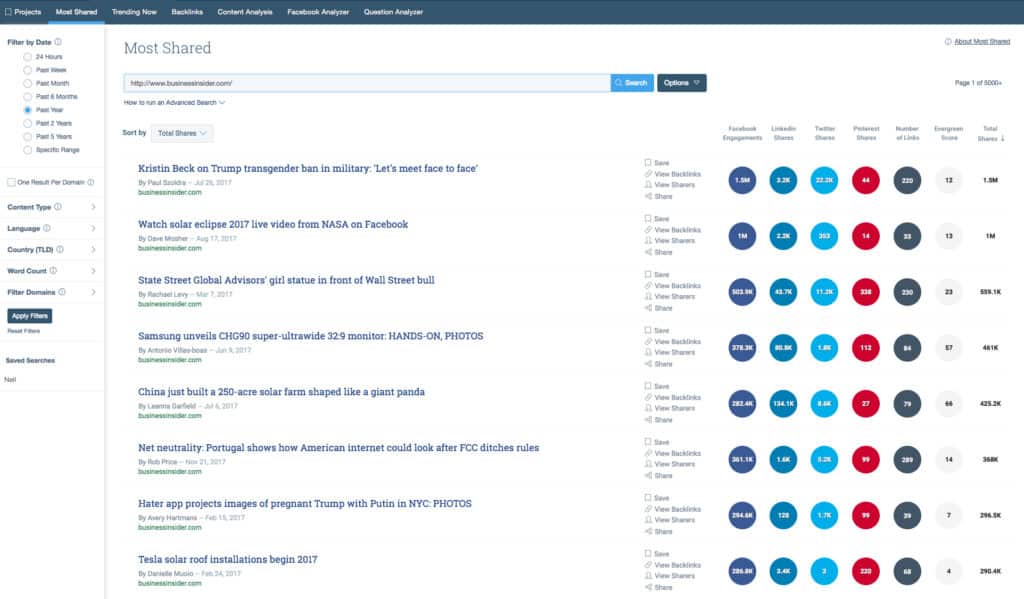
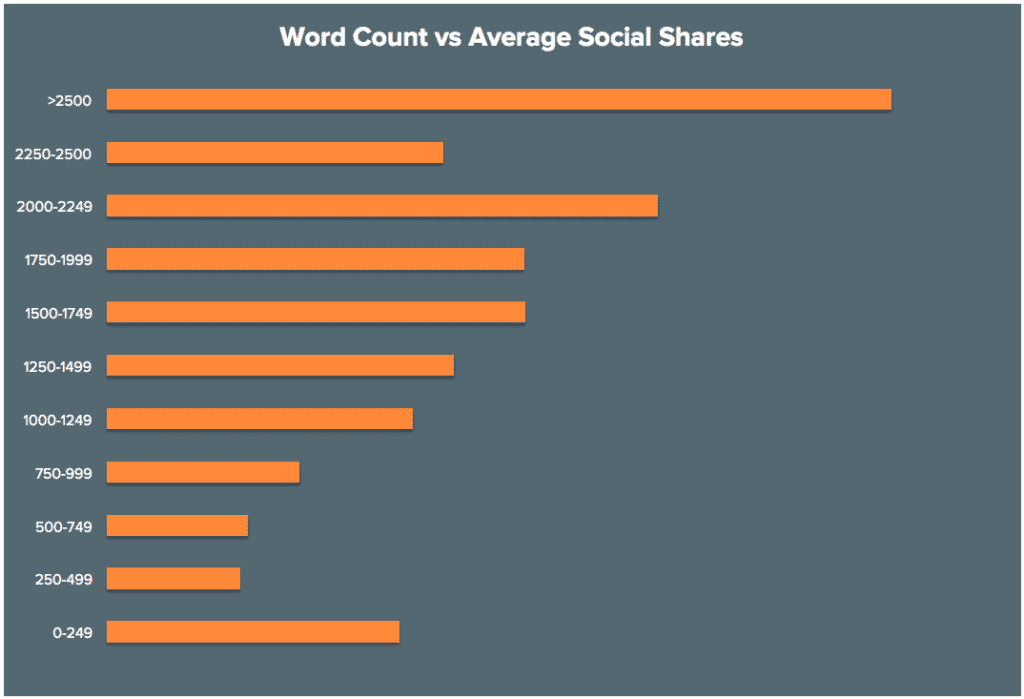
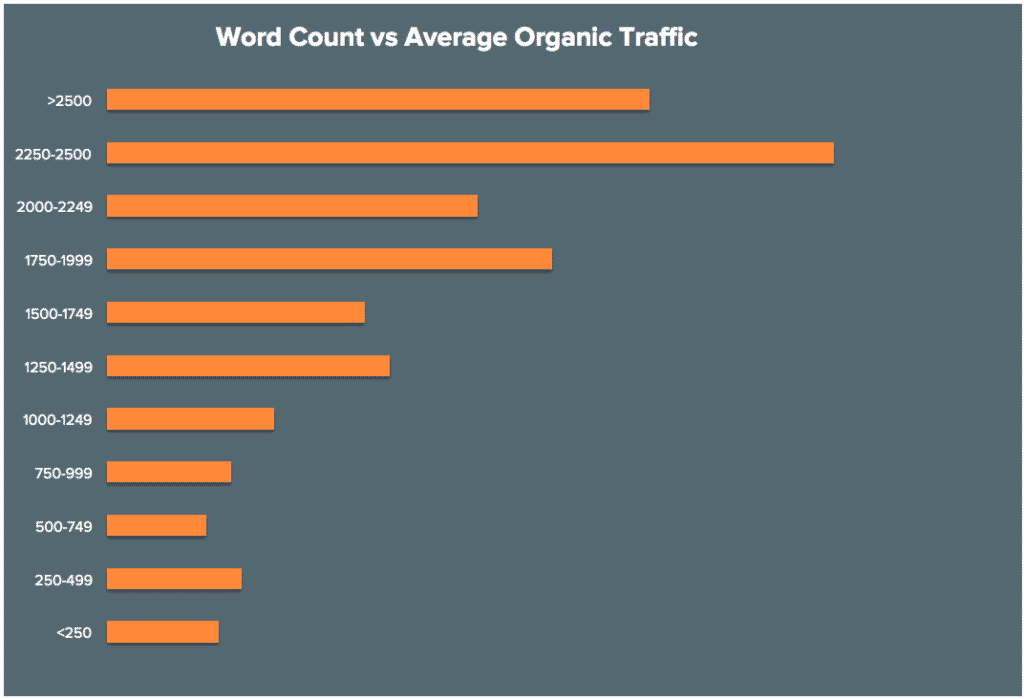
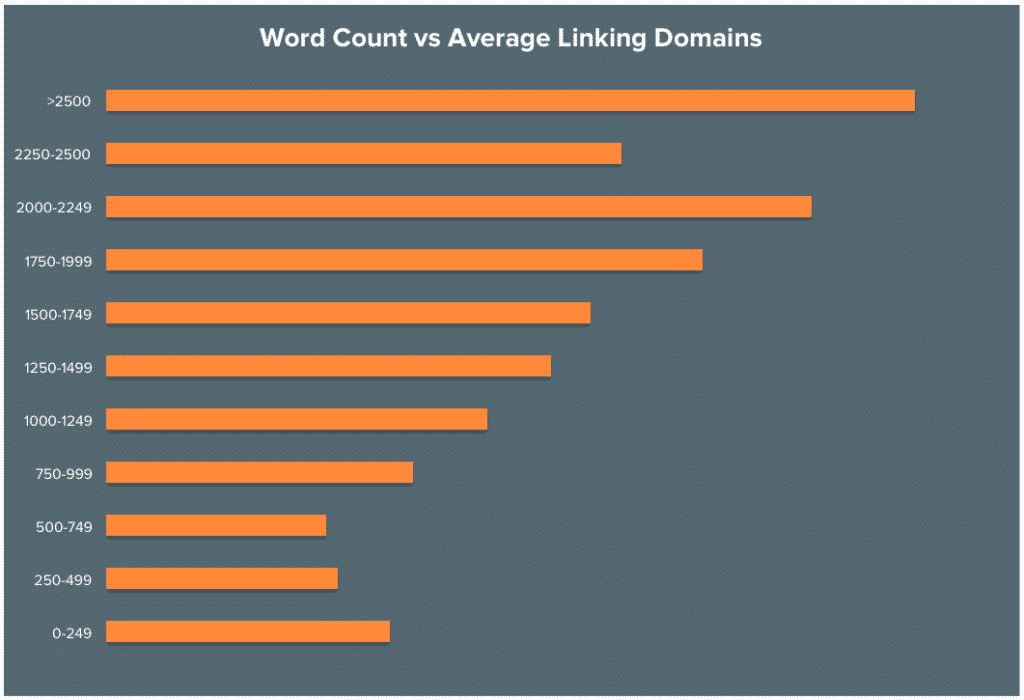
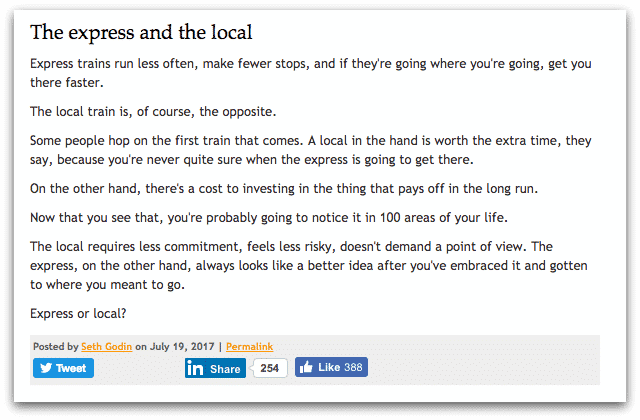

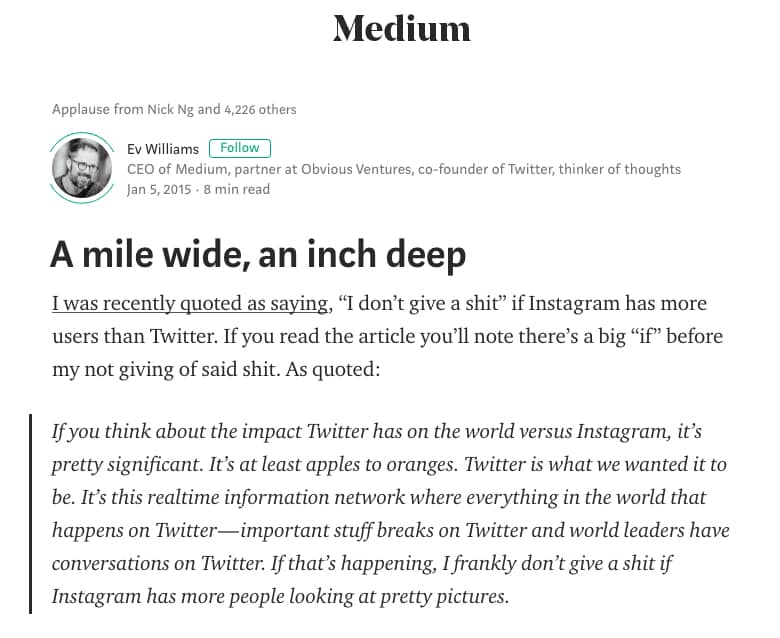
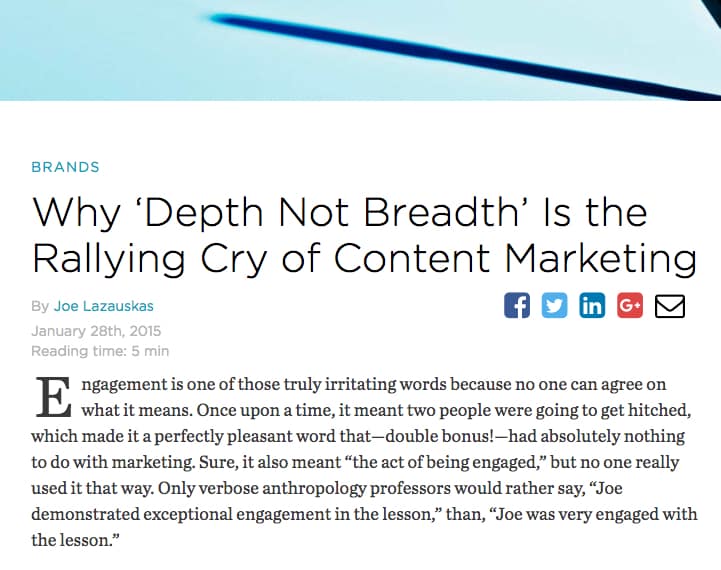
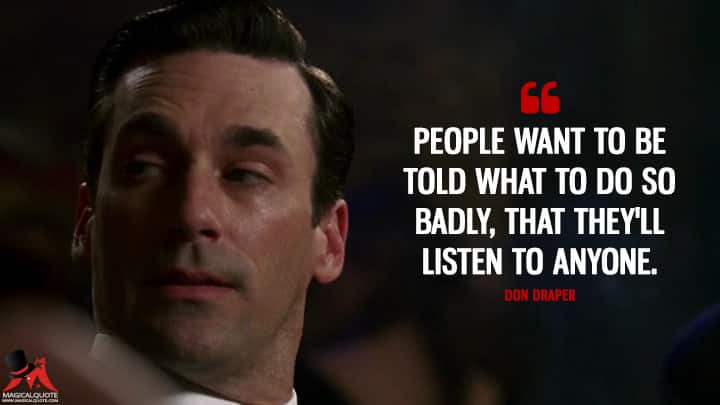
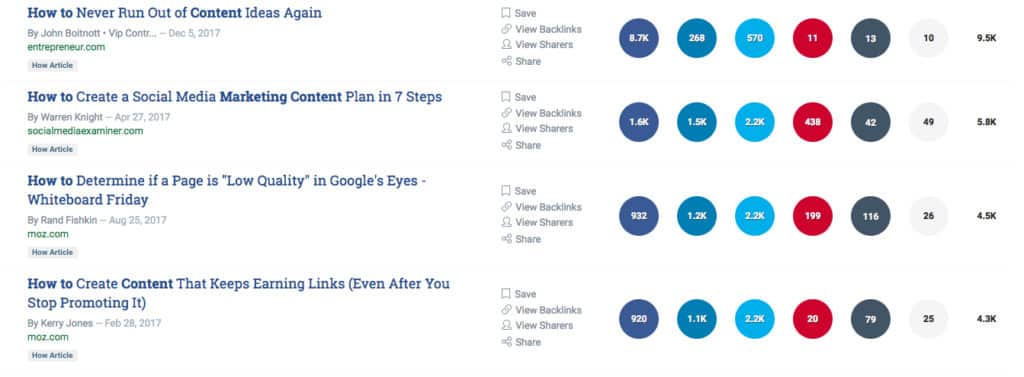
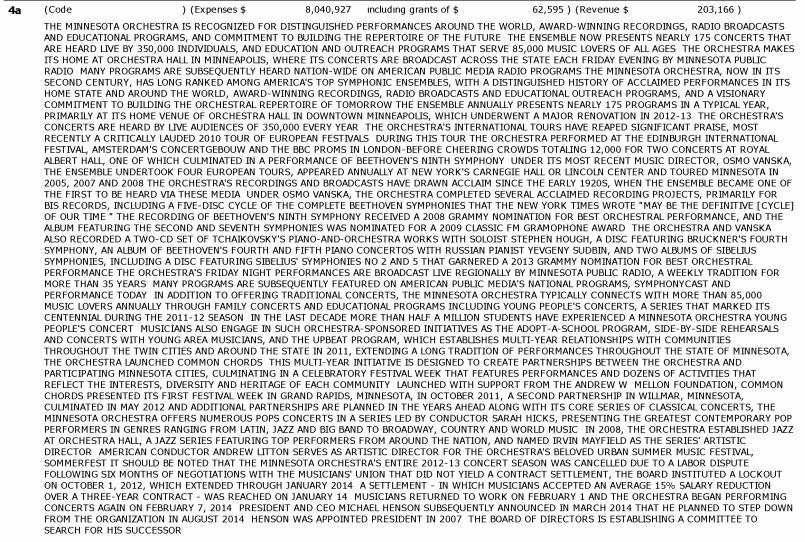
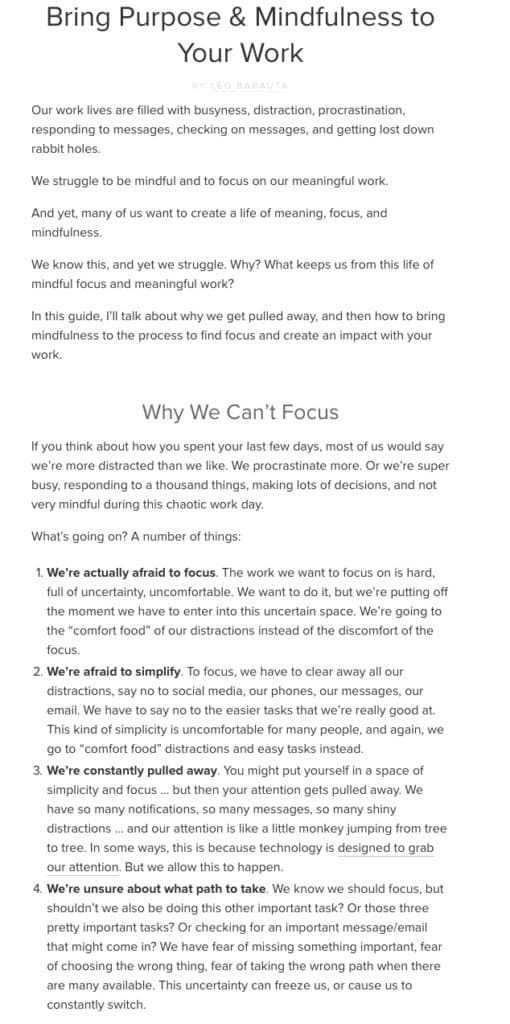

279 Comments
genel blog gönderil için siteyi ziyaret edebilirsiniz.
instagram takipçi satın almak için siteyi ziyaret edebilirsiniz.
instagram beğeni almak için sitemizi ziyaret edebilirsiniz.
tiktok beğeni satın alma sitesini ziyaret edebilirsiniz.
instagram beğeni satın al ve instagram takipçi satın alma
http://fishingandhuntingtv.com/ro/stiri/sa-inceapa-fhexpo.html
sdsdsdsa
dsdsd
hopla vv
hello world.
Çelik konstrüksiyon yangın merdiveni için ulaştığımız Merter Mühendislik firması gayet ekonomik ve statik açıdan dayanıklı proje çiziminden dolayı çok teşekkür ederiz.
https://www.flickr.com/photos/195473891@N07/52099196912
fuck google and
bahis sitesi dolandırıcısıy
dolandırılmak isteyen gelsin.
dolandırılmak isteyen gels
dolandırılmak isteyen gelsin.ız.
Anlık ve son dakika haberleri için hemen ziyaret et. https://teknolojihaberleri724.com/
Anlık ve son dakika haberleri için hemen ziyaret et. https://teknolojihaberle
Anlık ve son dakika haberleri için hemen ziyaret et. https://edirnedehaber.com/
Anlık ve son dakika haberleri için hemen ziyaret et. https://edirnedehabe
Anlık ve son dakika haberleri için hemen ziyaret et. https://edirnedehaber.com
Anlık ve son dakika haberleri için hemen ziyaret et. https://rushaberler.com/
Anlık ve son dakika haberleri için hemen ziyaret et. https://rushaberler.com
Anlık ve son dakika haberleri için hemen ziyaret et. https://rushaberler.com//
Anlık ve son dakika haberleri için hemen ziyaret et. https://rushaberler.com//m/
Anlık ve son dakika haberleri için hemen ziyaret et. https://haberlinux.com/
Anlık ve son dakika haberleri için hemen ziyaret et. https://haberkaynaginiz.com/
Anlık ve son dakika haberleri için hemen ziyaret et. https://haberkaynaginiz.co
Anlık ve son dakika haberleri için hemen ziyaret et. https://haberkaynaginiz.c
Anlık ve son dakika haberleri için hemen ziyaret et. https://39haber.com/
Anlık ve son dakika haberleri için hemen ziyaret et. https://batialanyahaber.com/m/
Anlık ve son dakika haberleri için hemen ziyaret et. https://batialanyahaber.com/m//
Anlık ve son dakika haberleri için hemen ziyaret et. https://batialanyahaber.co
Anlık ve son dakika haberleri için hemen ziyaret et. https://batialanyahaber.com/m
Anlık ve son dakika haberleri için hemen ziyaret et. https://batialanyahaber.com/
Anlık ve son dakika haberleri için hemen ziyaret et. https://hisargazetesi.com/
Anlık ve son dakika haberleri için hemen ziyaret et. https://hisargazetesi.com/com/
Anlık ve son dakika haberleri için hemen ziyaret et. https://hisargazetesi.com/com/om/
Anlık ve son dakika haberleri için hemen ziyaret et. https://hisargazetesi.c
Anlık ve son dakika haberleri için hemen ziyaret et. https://atthaber.com/
Anlık ve son dakika haberleri için hemen ziyaret et. https://atthaber.com/m/si.com
Anlık ve son dakika haberleri için hemen ziyaret et. https://atthaber.com/m/si.com/
Anlık ve son dakika haberleri için hemen ziyaret et. https://haberimyoktu.com/
Anlık ve son dakika haberleri için hemen ziyaret et. https://haberimyoktu.co
Anlık ve son dakika haberleri için hemen ziyaret et. https://haberimyoktu.com//
Anlık ve son dakika haberleri için hemen ziyaret et. https://haberimyoktu.co
Anlık ve son dakika haberleri için hemen ziyaret et. https://izmirtekhaber.com/
Anlık ve son dakika haberleri için hemen ziyaret et. https://izmirtekhaber.com
Anlık ve son dakika haberleri için hemen ziyaret et. https://izmirtekhaber.com
Anlık ve son dakika haberleri için hemen ziyaret et. https://izmirtekhaber.com/m/
Anlık ve son dakika haberleri için hemen ziyaret et. https://bursaiyihaber.com/
Anlık ve son dakika haberleri için hemen ziyaret et. https://sesligazeteniz.com/
Anlık ve son dakika haberleri için hemen ziyaret et. https://sesligazeteniz.com/
Anlık ve son dakika haberleri için hemen ziyaret et. https://sesligazeteniz.com/m/
Anlık ve son dakika haberleri için hemen ziyaret et. https://game-haber.com/
Anlık ve son dakika haberleri için hemen ziyaret et. https://game-haber.com/
Anlık ve son dakika haberleri için hemen ziyaret et. https://game-haber.com//
Anlık ve son dakika haberleri için hemen ziyaret et. https://game-haber.com///si.com/
Anlık ve son dakika haberleri için hemen ziyaret et. https://game-haber.com///
Visit now for instant and breaking news. https://puffnachrichten.com/
Visit now for instant and breaking news. https://puffnachrichten.com/
Visit now for instant and breaking news. https://mtlnews24.com/
Visit now for instant and breaking news. https://mtlnews24.com/com/
Visit now for instant and breaking news. https://mtlnews24.com/com/hrichten.com/
Visit now for instant and breaking news. https://mtlnews24.com/com/hrich
Visit now for instant and breaking news. https://dj30news.com/ten.c
Visit now for instant and breaking news. https://dj30news.com/
Visit now for instant and breaking news. https://dj30news.com/ten.com/.com/
Visit now for instant and breaking news. https://dj30news.com/ten.com/
Anlık ve son dakika haberleri için hemen ziyaret et. https://sondakikagazetesi.com/
Anlık ve son dakika haberleri için hemen ziyaret et. https://sondakikagazetesi
Anlık ve son dakika haberleri için hemen ziyaret et. https://sondakikagazete
Anlık ve son dakika haberleri için hemen ziyaret et. https://sondakikagazetesi.com/
ilelebet burada!
ilelebet burada!yapabilirsiniz.
Anlık ve son dakika haberleri için hemen ziyaret et. https://sagliklisaglik.com/
Anlık ve son dakika haberleri için hemen ziyaret et. https://sagliklisaglik.
Anlık ve son dakika haberleri için hemen ziyaret et. https://sagliklisaglik.
Anlık ve son dakika haberleri için hemen ziyaret et. https://sagliklisaglik.co
Anlık ve son dakika haberleri için hemen ziyaret et. https://saglikvehastalik.com
Anlık ve son dakika haberleri için hemen ziyaret et. https://saglikvehastalik.com/
Anlık ve son dakika haberleri için hemen ziyaret et. https://vansagduyuhaber.com/
Anlık ve son dakika haberleri için hemen ziyaret et. https://vansagduyuhaber.c
Anlık ve son dakika haberleri için hemen ziyaret et. https://tezverenhaber.com/
Anlık ve son dakika haberleri için hemen ziyaret et. https://tezverenhaber.com/com/
Anlık ve son dakika haberleri için hemen ziyaret et. https://tezverenhaber.com/com/
Anlık ve son dakika haberleri için hemen ziyaret et. https://tezverenhaber.c
Anlık ve son dakika haberleri için hemen ziyaret et. https://kosgebhaberleri.com/
Anlık ve son dakika haberleri için hemen ziyaret et. https://haberyolcusu.com/
Anlık ve son dakika haberleri için hemen ziyaret et. https://haberyolcusu.co
Anlık ve son dakika haberleri için hemen ziyaret et. https://haberyolcusu.com/.com/
Anlık ve son dakika haberleri için hemen ziyaret et. https://haberimizvarahali.com/
Anlık ve son dakika haberleri için hemen ziyaret et. https://haberbunoktada.com/
Anlık ve son dakika haberleri için hemen ziyaret et. https://haberbunoktada.com/m/
Anlık ve son dakika haberleri için hemen ziyaret et. https://haberbunoktada.c
Anlık ve son dakika haberleri için hemen ziyaret et. https://caylakhaber.com/
Anlık ve son dakika haberleri için hemen ziyaret et. https://caylakhaber.com/
Anlık ve son dakika haberleri için hemen ziyaret et. https://caylakhaber.com/m/
Anlık ve son dakika haberleri için hemen ziyaret et. https://www.habereuro.com/
Anlık ve son dakika haberleri için hemen ziyaret et. https://www.habereuro.com
Anlık ve son dakika haberleri için hemen ziyaret et. https://www.habereuro.com/er.net/
hello my names is tom. very nice content.
https://www.instapaper.com/read/1508416372
twitter trend topic satın al burada
twitter trend topic satın a
twitter trend topic satın
twitter trend topic
ilelebet giriş işlemleri burada yapılır.
instagram takipci satın alma fırsatını kaçırmayın.
instagram takipci satın alma fırsatını ka
instagram takipci satın alma fırsatını
instagram takipci satın alma fırsatını
instagram takipci satın alma fırsatını
takipçi satın al hizli ve guvenilir.
coin nasıl alınır sorusunun cevabı burada.
bitcoin nasıl alınır dediğiniz an sitemize bakabilirsiniz.
bitcoin nasıl alınır cevabını arıyorsanız buraya bakin.
bitcoin nasıl alınır dediğiniz an s
gorabet- burada.
gorabet- burada.
gorabet- burada.
gorabet- burada.
gorabet- burada.en yeni adresi hizmetinizde.
gorabet- burada.en yeni adresi hizmetinizde
gorabet- burada.en yeni adresi hizmetinizde.ada.
gorabet gercek ve tek dogru
sadsadsadsd
asdsadsadas
sdsadsadsadsdsads
I do not even understand how I ended up here, but I assumed this publish used to be great
hellooosadsahellooosadsahellooosadsahellooosadsa
acxvcxvcvcvc
zcxzcxzcxzcxcxc
sadsdsdsdsad
comment
En güvenilir bahis siteleri listesi için hemen web sitemizi ziyaret edebilirsiniz.
En güvenilir bahis siteleri 2022 için hemen ziyaret et.
En güvenilir bahis siteleri 2022 için hemen ziyaret et.
En güvenilir bahis siteleri 2022 için hemen ziyaret et.
asdsadsdsdsa
sdsadsds
sdsdsd
dfdfdfdfds
goodd
trend topic satın al ve harika gündem ol!
https://whoistheowner.enpatika.com/cat/who-is-the-owner
dsdsdsa
Örgü modelleri ile ilgili tüm yeni gelişmeleri web sitemizden kolay bir şekilde takip edebilirsiniz. Kadınlara özel yeni örgü modelleri için geç kalmayın.
sadsadasd
eefefefefefe
ddedede
asdsadsda
sdsdasd
sadsada
ahmethakan051 ahmetefendiolu1 marci12hotmailc ahmeterdem_34 gedik63y ahmetes47823549
mami_yard mardinli87n ahmetenol6 ahmetta10294742 ahmetdiner7 gookless10
sanliurfa digit�rk servisleri ile en uygun digiturk paketinden sizde yararlanin.
0777eylul 0743mustafa 08elaeylul 08fa 05438705612s 01_birse
65_bozz gokanth03598119 mehmetseref061 681fb 65_eray 6534ecrin
gdekesra manmemetkama ahmettu44655887 ahmettokma mamiiulas ahmetku86890298
bagranalperen bahar199111 gsspynhakan babanioglu58 baburmelih23 bahar_cigdem
Arkadaslar bu siteye dün giris yaptim ama 2 3 saat degil benim takipçilerim 12 saat sonra geldi sanirim herkes farkli??
Toplam 15 kisi engellemis beni 3 kisi bayadir stalkliyor
Retweet ve Favori sanirim daha hizli geliyor??
site basarili bence geçte olsa geliyor takipçiler??
If these are true, the ground will move ??
Neegggggggggggggg
agliyordu 🙂
tam da tahmin ettigim kisileri gördüm, uygulama kesinlikle gerçek ??
Uygulamayi yapanin ellerine saglik sorunsuz çalisiyoo ????
umarim kesintisiz hergün çalisir
Stalkerlarimi Ögredim
helal valla??
A Really Excellent Application Good luck
Gerçekten Mükemmel Bir Uygulama Elinize Saglik
Organik kullanicilar olunca güzel oluyor böyle??
Bu çikan veriler gerçekse ben sokk
I didn’t believe it but I saw it
I finally saw those who viewed my twitter profile
Today we learned about our secret admirers…
Asla beklemedigim 1-2 kisiyi görünce sok geçirdim ??
Takipçiler türk bilginize??
I hope it works every day without interruption
Who exits after logging in to the site?
Kimleerr kimleri stalkliyormus megersemmm ??
Gerçekten Mükemmel Bir Uygulama Elinize Saglik
kimleri görüyorum kimleri
tam da tahmin ettigim kisileri gördüm, uygulama kesinlikle gerçek ??
rain of followersyooooooooooooooooooo ?? 3100 arrived
I saw exactly the people I predicted, the app is absolutely real ??
A Really Excellent Application Good luck
Instantly Uploaded I’m here now??
Asla beklemedigim 1-2 kisiyi görünce sok geçirdim ??
Good to learn 🙂
I Learned My Stalkers
gelen takipçiler 0 türk takipçi masallah
everyone has been a slap but this man sent it halal well??
mükemmel bir uygulama olmus cidden ??
tam da tahmin ettigim kisileri gördüm, uygulama kesinlikle gerçek ??
suan çildiriyorum gördükçe ????
Very nice application
Bazilarini tahmin etmistim, sanirim bu uygulama gerçekten dogru ??
wow they finally did that too bee ??
Eski sevgilimi görmek biraz sey sanki ??
I finally saw those who viewed my twitter profile
ahaaa ??????
eger bunlar dogruysa yer yerinden oynar ??
Got 3000 followers after 4 hours??
Kimleerr kimleri stalkliyormus megersemmm ??
oooo kimler kimler var hayretler içerisindeyimm??
Who I See Who
incoming followers 100% turkish followers mashallah
ise yarayacagini düsünmüyodum ama girince gerçekten sok oldum ??
I had a broken day but now I’m happy
really gives thank you??
Arkadaslar bu siteye dün giris yaptim ama 2 3 saat degil benim takipçilerim 12 saat sonra geldi sanirim herkes farkli??
An Excellent App indeed
it’s an excellent app ??
I Learned My Stalkers
Organik kullanicilar olunca güzel oluyor böyle??
Stalkerlarimi Ögredim
Gizli Hayranlarimi Ögrenmis oldum
hi instaevreni
thank you favoribahis
thank you sex hattı
incoming followers do it on rt and fav??
thanks??
ile takipçi kazandim tesekkür ederim??
bu cidden gerçek miiii? ??
Gerçekten inanilmaz ya neler var neler 🙂
stalkers, let’s sit down and talk why me ??
I want the instagram version as soon as possible ??
I Learned My Secret Admirers
incoming followers do it on rt and fav??
Çalisiyor bilginize??
It’s working for your information??
oh ??
You’ve been following for 2 years, at least write it down, you’re unscrupulous ????
ulan 2 yildir takip edermi bir insan
good to know that ??
suan çildiriyorum gördükçe ????
tam da tahmin ettigim kisileri gördüm, uygulama kesinlikle gerçek ??
Stalkerlarimi Ögredim
I guessed some, I think this app is really true ??
stalkers, let’s sit down and talk why me ??
I had a broken day but now I’m happy
I went crazy when I saw my stalkers
gelen takipçiler rt ve fav’da yapiyor??
Bazilarini tahmin etmistim, sanirim bu uygulama gerçekten dogru ??
People who leave after logging in to the site???
Takipçiler türk bilginize??
Çay veya Kahve istermisiniz Stalkerlar?
oh ??
The site is successful, I think it’s coming late, followers??
I saw exactly the people I predicted, the app is absolutely real ??
ders notum
Only make promises in a headline that you can keep in your content.
Use superlatives.
Daniel, such a solid and thorough resource you’ve created here. Thank you. You’ve not only corroborated some of the best writing practices I’ve read, you’ve sewn them together into a workflow, one that shed new light on the process for me.
Awesome feedback. Thanks, Philip!
Excellent… WOW a lot to take in.
Glad it was helpful.
Daniel,
I second everyone’s comments on how well-written this post is. I’ve bookmarked it as a go-to resource. Wanted to ask, do you ever use the Google tools and search for articles that have appeared in the last year as well? To me, it seems like this is also a way to see who’s written more recently on the topic and trying to knock others of the top of the SERP mountain.
Awesome addition, Wagepoint. Yes, it’s a great idea to scope out what’s recently been written!
Thanks for this article! I’ll be using the WordCounter and the insight on headlines more in my work life and on my own personal website.
Thanks for checking this out, Georgia!
I think it’s after a while I’ve had the patience to read an article in longform and actually been able to absorb what was being told. Thank you Daniel and Team Edgar for a lucid, easy to read and informative article. The points were clear. The methodology simple without using too many tools or technical jargon. The backlinking to all the sites really helped in case I wanted to know more on the subject. This will surely help in creating better articles for my clients and the agency as well.
Many thanks
Thanks so much for reading it – really glad it was informative and enjoyable all the way to the end!
I just have to say this article is really excellent. I’ve been doing content writing for a number of years, and I still learned some really interesting tidbits in this article. For example, going to Google and finding who’s ranking on the first page for your keyword is such a “DUH” thing to do, yet I don’t do it regularly. Genius, I say. Thanks for putting out such great stuff!
Thanks so much, Rebekah! I think a lot of people (myself included!) would agree that some of the most common-sense steps are also some of the easiest to totally skip! (Go figure, right?) Glad you liked this post!
Thank you, Rebekah! Your kind words mean a lot. Good luck with your work!
You’re one of a few people that really GET it. Nicely done.
Glad you liked this one, Jeff!
Thanks, Jeff! 🙂
When I want to solve a problem I find articles that deep dive and teach everything on the subject matter…so I can solve my problem – the one stop shop approach.
I find reading one long in-depth article, with fresh cup-o-hot, is 100x easier than the scatter gun of reading 10 different articles.
I would’ve liked a section on editing – or link to your favorite resources as the ‘added value’….editing is where I struggle the most.
I’d double check the units on the y-axis of the ‘words vs reaction’ time chart … 35000 ms is actually 35 seconds – if my math is right – as ’35 second is *not* virtually instantaneous’ 🙂
Maybe we’ll have to explore editing in a future deep dive! (And I suppose that thinking that 35 seconds is a speedy reaction time explains why I was never good at sports.)
Thanks for the observations on that! I totally agree with your sentiments on the 1 long article (cup-o-hot included).
A thorough, perfect guide Daniel, thanks! I’m going to point one of my clients to this now.
Awesome, Drew! Glad it was helpful. Thank you for sharing it.